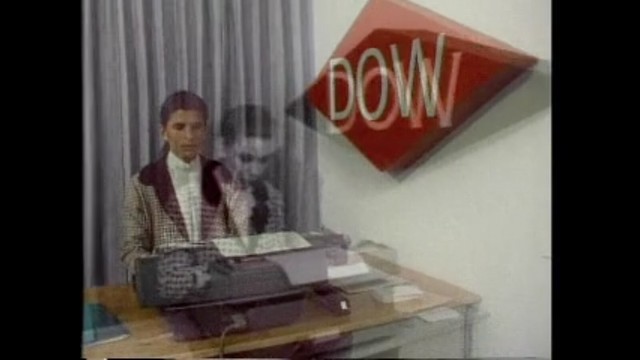 Harun Farocki, a German filmmaker, made a short film The Inextinguishable Fire in the late sixties. It was a fierce anti Vietnam War film that implicates not just the US Government and the Dow Chemical but it implicated the ordinary US citizens in its atrocity also, while explaining the napalm production in such a detached, scientific manner. To put it better way, instead being confrontational by showing the pictures such as the iconic 'napalm girl' or other atrocities and turned the viewers off, it explained how modern division of labor- 'the building blocks' of the Dow Chemical company, where each individual worker makes only one component of the bomb, surreptitiously hides its true intent on what those individuals are contributing in making. The film broke down scientifically how it's done and how the thought of individual responsibilities in those kind of endeavor dissolve. It was short. It was emotionless and it was to the point.
Harun Farocki, a German filmmaker, made a short film The Inextinguishable Fire in the late sixties. It was a fierce anti Vietnam War film that implicates not just the US Government and the Dow Chemical but it implicated the ordinary US citizens in its atrocity also, while explaining the napalm production in such a detached, scientific manner. To put it better way, instead being confrontational by showing the pictures such as the iconic 'napalm girl' or other atrocities and turned the viewers off, it explained how modern division of labor- 'the building blocks' of the Dow Chemical company, where each individual worker makes only one component of the bomb, surreptitiously hides its true intent on what those individuals are contributing in making. The film broke down scientifically how it's done and how the thought of individual responsibilities in those kind of endeavor dissolve. It was short. It was emotionless and it was to the point.
Jill Godmilow, an American experimental filmmaker, watched the film in the 90s for the first time and thought it was perfect. It was a documentary unlike any other, but far more effective than any documentaries that plead to the viewer's emotions with 'shocking' evidences. She was just disappointed that she didn't make it herself. So she decided to remake it, shot-by-shot, but this time in English and in color. She would make it in the US and closer in vicinity to where the Dow Headquarters were situated. With the colleagues and collaborators, Godmilow seeks exact copies in reenactment scenes. Farocki's minimalist and obviously fake staging of Dow Chemical offices are reenacted in the same manner. The burning of the lab rats, non-actors portraying scientists, delivering lines in monotones are exactly the same, except it's now in English and people in period costumes. Godmilow sometimes superimposes Farocki's film directly over her image, making sure that viewers see it is the exact replica. The message remains the same. The times have changed but the atrocities commited in our name have not.
Considering that, just like any other decade, 90s were riddled with wars as it is now and the modern military industrial complex is fully in place with the thought of individual responsibilities in the atrocities of war getting further and further away from our consciousness with more complex division of labor, What Farocki Taught reminds us that things haven't changed much. And it's quite remarkable the far reaching influence of Harun Farocki, as a writer, philosopher and filmmaker, to generations of filmmakers both in experimental and narrative field.
What Farocki Taught is also a good reminder of the state of what is considered as a documentary nowadays. Since the explosion of topical liberal documentaries in the 90s, the word is hijacked by the news media - every major newspaper now has its vlogs, CNN has its own documentary production division, streaming platforms are awash with its own documentary productions, all catered toward shocking revelations and appeal to your emotions with 'real footage' and 'truth seeking' manipulating viewers this way or that way. Is showing the shocking images and playing with your emotions with a narrativeized documentary a right way to go about discovering the truth? Or is the truth elsewhere, in a cellphone shot footage of war in Syria, Palestine, Yemen, Ukraine put on youtube? Our critical analysis of what we see is necessary. The context matters. How we approach to seek the truth is important. Farocki and Godmilow shows more effective way to communicate and it's valuable.
No comments:
Post a Comment